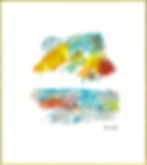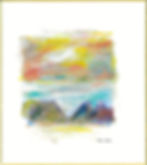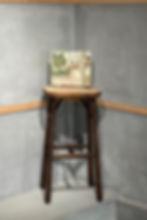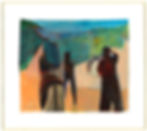

The Shikishi Format & Aesthetic
Understanding Shikishi — A Series (3)
This page explores the origins of the shikishi format, from its roots in Heian-period shikishigata to the standardized boards used today. It highlights how changing materials and evolving aesthetics shaped a format that continues to influence artistic expression.
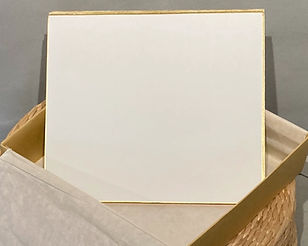
From Shikishigata to Shikishi: The Evolution of a Format in Japanese Aesthetics
The visual and literary traditions of Japan are deeply interwoven, with formats such as shikishigata (色紙形) and shikishi (色紙) representing key examples of this synthesis. While often mistranslated as “colored paper,” the term shikishi in classical contexts refers not to generic origami or craft materials, but to specially prepared, often decorated paper used for poetry and calligraphy. A close philological and historical reading shows that shikishigata, far from being derivative of shikishi, actually predates it—emerging as an aesthetic and compositional convention in the Heian period (794–1185).
Shikishigata: Poetic Format in the Heian Court
During the Heian period, the practice of mounting short poems (waka) on small, square or rectangular sheets of ornamented paper became widespread in aristocratic circles. These sheets—often dyed, brushed with mica, or decorated with gold and silver—were then affixed onto larger surfaces such as folding screens (byōbu) or sliding doors (shōji), creating visually rich, multi-poetic compositions. These arrangements were known as shikishigata—literally, “in the form or style of shikishi.”
Despite the literal translation of the characters 色紙 as “colored paper,” the pronunciation shikishi in this context denotes a specific cultural artifact: not mere dyed paper, but courtly, decorated writing paper used for inscribing verse. Thus, shikishigata refers not to color in a general sense, nor to origami, but to a stylized poetic presentation format grounded in elite literary practices.
Shikishi: Standardization and Format Evolution
Building upon the compositional conventions of shikishigata, the shikishi as a discrete, portable object came into more defined use from the Muromachi period (1336–1573) and became especially prominent during the Edo period (1603–1868). These square boards—typically mounted with high-quality washi and often edged with gold foil—were used for calligraphy, painting, and haiga, and were embraced by professional artists, monks, and literati.
Two early standard sizes can be identified in the Edo period:
-
Large shikishi: approximately 19.4 × 17 cm
-
Small shikishi: approximately 18.2 × 16 cm
These formats were particularly suited for mounting in albums and decorative panels. They reflect an early stage in the gradual material standardization of poetic display formats.
With the rise of printing, book publishing, and the merchant class in Edo Japan, shikishi became accessible as both collectible art forms and tools for personal expression. Beginning in the late Edo period, a range of shikishi formats became increasingly standardized, supporting both traditional aesthetics and new forms of artistic expression. This formalization laid the groundwork for the modern standard size of 27.3 × 24.2 cm, which became dominant in the twentieth century and remains widely used today. The availability of boards in consistent dimensions enabled greater portability, collectibility, and exchange, while also reinforcing shikishi's role as both an artistic medium and a social token.
Aesthetic Continuity
The transition from shikishigata to shikishi exemplifies how format in Japanese art carries both formal and conceptual weight. Shikishigata began as a poetic device integrated into larger decorative schemes, while shikishi later emerged as discrete artworks on compact supports. What unites them is a shared visual grammar—framing, balance, poetic density.
Even today, the shikishi board continues to serve both traditional and experimental uses. Whether as a vessel for haiku, sumi-e, or contemporary mixed media, its dimensions and proportions carry forward a history of visual-linguistic elegance that dates back to the courtly culture of the Heian period.





